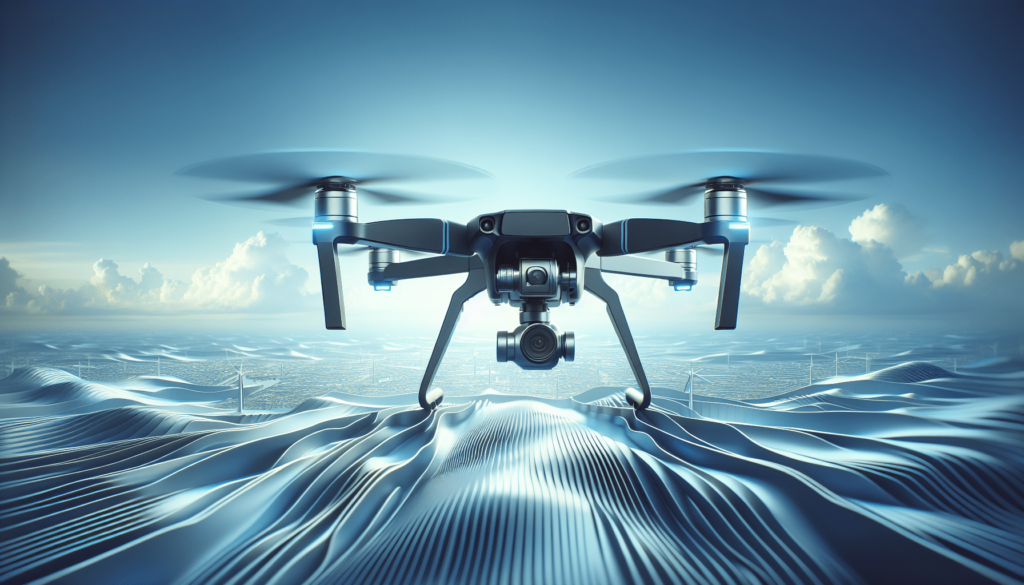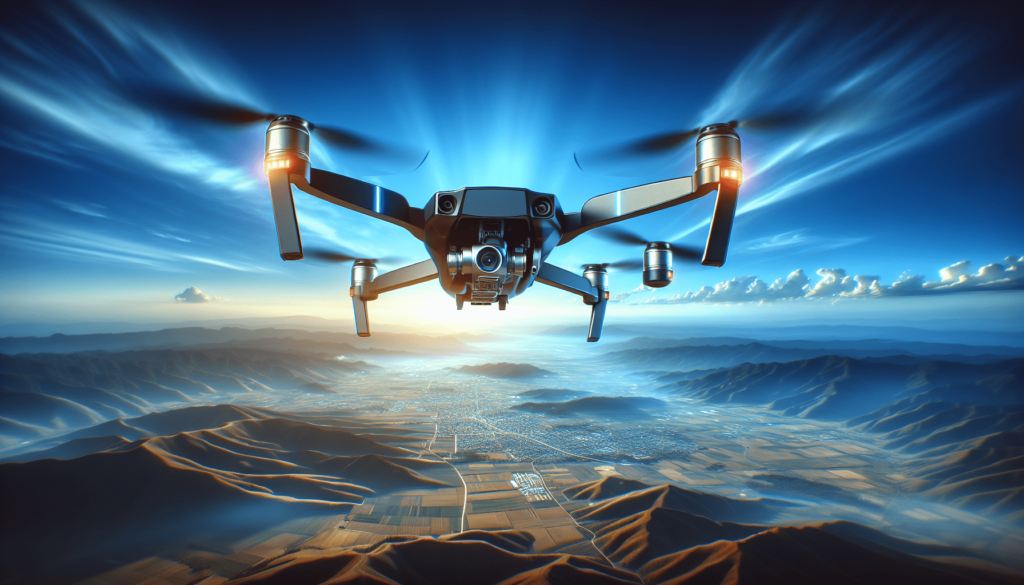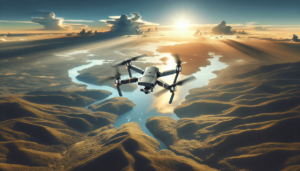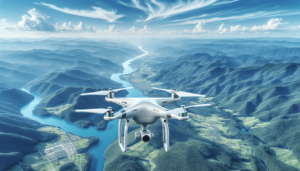Aren’t you curious about how we can take our aerial photography to the next level? We know the feeling—standing there with our drones, looking at the endless sky, and wishing our shots looked just a bit more magical. It’s not just about pressing a button; it’s about capturing a moment that’s captivating, and somehow out of this world. And the secret often lies not just in skill, but in having the right gear.
Why Professional Aerial Photography Gear Matters
Have you ever tried taking a stellar photo with a disposable camera? It’s like trying to eat soup with a fork—it just doesn’t quite work. When it comes to aerial photography, having professional-grade equipment can make a dramatic difference. The quality of our images changes, options become abundant, and suddenly, we’re not just snapping pictures; we’re creating art. Let’s dive into the specifics of why upgrading to pro gear can redefine our photography experience.
Quality and Durability
Professional gear isn’t just for show. It’s built to last, withstand tougher conditions, and deliver consistently high-quality output. When we’re up in the air, facing elements like wind, altitude, and occasional rough landings, we need equipment that won’t give up on us at a crucial moment.
Expanding Creative Possibilities
With professional equipment, we unlock additional features—from superior zoom capabilities to advanced stabilization options. Suddenly, the creative ideas we’ve been dreaming about become achievable. With more tools at our disposal, we’re free to push the boundaries of what’s possible in aerial photography.
Building Professional Credibility
If our goal is to take our hobby into professional territory, investing in quality gear is essential. Clients and audiences often measure our capability by the results we deliver, which often rely heavily on the equipment we use. When people see the impeccable quality of our photography, it builds trust and positions us as experts in our field.
Key Components of Pro Aerial Photography Gear
Now that we’ve waxed poetic on the importance of pro gear, what does that actually include? Understanding the key components of our equipment can help us make informed decisions when it’s time to upgrade. It’s like assembling a puzzle, where each piece plays a crucial role in the final picture.
Drones
Ah, the star of the show! The drone is our aerial platform and the eye in the sky. When choosing drones for professional use, we need to consider factors like camera quality, flight time, range, and additional features such as obstacle detection and follow-me mode.
| Feature | Importance |
|---|---|
| Camera Quality | Determines the resolution and clarity of images and videos. Look for high megapixels and 4K video capabilities. |
| Flight Time | Longer flight times allow for more maneuverability and capturing more content without needing frequent landings. |
| Range | A greater range provides more freedom to explore and capture footage over large areas. |
| Features | Additional features can enhance the flexibility and creativity of shoots. Look for obstacle detection, autonomous flight modes, and follow-me mode. |
Cameras and Gimbals
Cameras are the heart of our aerial setup. A great camera combined with a good gimbal ensures smooth, stable shots, even when conditions are less than ideal. We should look for drones that support interchangeable lenses, high dynamic range, and professional-grade sensors.
Remote Controllers
The remote controller is our cockpit, where the magic happens. A quality remote can improve our control accuracy, range, and even our comfort during long shoots. Features to consider include the quality of display screens, ease of control, and additional functionalities like programmable buttons.
Stabilization Systems
Imagine capturing the perfect shot, only to find it too shaky to use. That’s where stabilization systems come into play. Built into many high-end drones, these systems counteract any unwanted movements, ensuring our footage comes out buttery smooth—and after all, isn’t it always about that silky-smooth shot?
Accessories
Just like adding cherries on top of our photography sundae, accessories can enhance function and ease of use:
- Extra Batteries: Because running out of juice right before sunset is a nightmare we all want to avoid.
- Propeller Guards: To keep both the drone and surroundings intact during exciting flights.
- Carrying Cases: Essential for keeping all our gear organized and portable, especially during travel.

Choosing the Right Gear for Your Needs
Choosing the right gear can feel like selecting the ideal toppings for a pizza—so many delicious options! But it’s about balance and personal taste. As enthusiasts and professionals, we must consider what meets our specific needs and how it aligns with our work style. It’s important to factor in the type of photography or videography we plan to do the most.
Assessing Personal Skill Level
Before we go all-out on state-of-the-art gear, let’s pause and consider our current skill level. Tools are essential, but skills make them powerful. If we’re beginners, starting with mid-range gear that allows growth is wise. For seasoned pros, high-end devices that match our expertise might suit us better.
Specific Use Cases
Are we capturing real estate listings, cinematic landscapes, or fast-paced sports? Each scenario has its unique gear needs. Real estate photography might prioritize wide-lens coverage, while action scenes demand high frame-rate video and robust obstacle avoidance.
Budget Considerations
Our wallets often play a significant role in our decision-making process—those pesky things. Setting a budget helps focus our search and ensures we get the best value for our money. Consider both initial investment costs and long-term expenses for maintenance and potential upgrades.
Brands Dominating the Pro Aerial Photography Scene
Brand loyalty isn’t just for our favorite coffee; it extends to tech as well. The market is rich with brands that have perfected certain aspects of aerial photography gear. Knowing which brands are at the forefront helps us make confident choices.
DJI
DJI has become synonymous with drones, and for a good reason. They offer a wide range of products that cater to both novices and seasoned professionals. The DJI Phantom and Mavic series are particularly beloved for their innovative features and excellent camera performance.
Autel Robotics
A notable player in the drone market, Autel Robotics is known for its Evo series, which provides impressive features at competitive prices. They often present themselves as alternative options for those looking to step slightly off the beaten path and explore alternatives to DJI.
Parrot
Among the earlier pioneers in the market, Parrot provides user-friendly options that still pack a punch in terms of features. They are excellent for photographers looking to balance ease of use with professional quality.
| Brand | Key Features |
|---|---|
| DJI | Renowned camera quality and feature-packed drones with various options for different users. |
| Autel Robotics | Known for the Evo series, offering competitive pricing and solid performance. |
| Parrot | User-friendly experiences with solid foundational tech, great for a smoother learning curve. |

Maintaining and Upkeeping Your Professional Gear
If we’re going to invest in top-notch gear, keeping it in pristine condition is of utmost importance. Ensuring our equipment lasts through seasons is as essential as having it in the first place. Let’s look at some tips for maintaining our gear to avoid the dreaded and costly surprise of equipment failure.
Regular Cleaning and Storage
Dust, dirt, and moisture are arch-nemeses to our high-tech gear. We must regularly clean components, especially cameras and gimbals, and store them safely. Investing in protective cases and cleaning kits goes a long way in prolonging equipment lifespan.
Updating Firmware and Software
Keeping software up to date is akin to having our morning coffee—it keeps things running smoothly. Manufacturers often release updates that fix past issues or offer new features. Exploring these updates allows us to leverage the latest improvements.
Scheduling Routine Checks
Just like visiting our doctors once a year (or that’s what we tell ourselves, anyway), scheduling regular checks for our equipment ensures everything operates optimally. Tracking usage and wear can help us anticipate future needs for repairs or even upgrades.
Tips and Tricks for Stellar Aerial Photography
While gear sets us up for success, our creativity and technique are the magic ingredients. It’s in those subtle choices and inventive angles that our skills truly shine. In this section, we’ll explore some tips and tricks that set professional-grade photography apart from the rest.
Mastering the Golden Hour
Shooting during the golden hour—just after sunrise or before sunset—provides stunning natural light that enhances colors and adds depth to images. We often find that the warm glow transforms ordinary landscapes into mesmerizing scenes.
Exploring Different Perspectives
We shouldn’t hesitate to experiment with angles and perspectives. Sometimes lowering altitude, circling subjects, or even shooting directly above can present a whole new dimension. Also, varying our subjects can keep the work fresh and exciting.
Utilizing Filters
Filters aren’t just for our Instagram selfies; they’re equally powerful in aerial photography. ND filters and polarizers can help manage light and reduce glare, creating well-balanced and professional-quality images.
Following the Rule of Thirds
This classic photography principle helps us compose visually appealing images by breaking an image into thirds and placing points of interest on these lines. Using this rule can guide us in leading our viewer’s eye through the frame creating a natural rhythm.
The Future of Aerial Photography
As technology advances at lightning speed, the field of aerial photography continues to evolve. From AI-assisted features to better lenses and new capturing techniques, the future is bright and full of possibilities. We’re not just capturing moments; we’re offering perspectives that may not have been imagined before.
AI and Machine Learning Enhancements
AI and machine learning are gradually making their way into drone technology, providing features like subject tracking, automated editing, and intelligent flight paths. Machine learning empowers our devices to adapt to different environments, optimizing settings for consistently stunning results.
Enhanced Connectivity Options
With 5G rollouts and robust wireless protocols, the future promises better connectivity, enabling real-time streaming and faster data transfers. Enhanced connectivity means quicker job turnarounds, efficient collaborations, and even live broadcasts with minimal latency.
Advanced Imaging Technology
Future developments focus on breaking boundaries of what cameras can achieve—from capturing even higher resolutions to improved low-light performance. We might see cameras that shoot 8K video, advanced HDR, and even holographic imaging capabilities in the years to come.
Conclusion
At the end of our day, and perhaps this long daydream about aerial photography, choosing the right pro gear is central to transforming how we capture the world from above. Our journey from hobbyists to professionals, though unique, echoes with a shared desire to create something both beautiful and memorable. By investing in quality equipment and nurturing our skills, we open up a sky of limitless creativity. So, let’s set our sights high, continue learning, and soon, the skies will be ours in all their captured beauty.
![7 Essential Aerial Photography Tips For Beginners [2025]](https://droneaperture.com/wp-content/uploads/2025/01/7-essential-aerial-photography-tips-for-beginners-2025-1-300x171.png)

